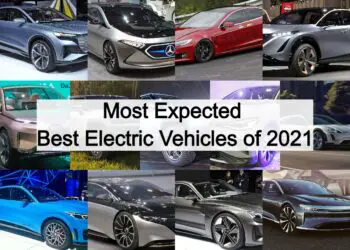In this post, we brought you the quickest and fastest electric cars of 2021 that defy any imaginable acceleration and top speed standards.
The era of electric cars has spawned a new kind of arms race between automotive manufacturers. instead of tackling top speed records, EVs are now solidifying their domination on the drag strips. The present acceleration times of electric cars put to shame internal combustion engines and let electric vehicle drivers become the new kings of quarter-mile runs.
Fastest Electric Cars by Acceleration
Tesla Model S Plaid
- Acceleration time (0-60 mph): 1.99 seconds
- Driving Range: 390 mi (627 km)
- Motor Power: 760 kW (1020 hp)
- Top Speed: 200 mph (320 kph)
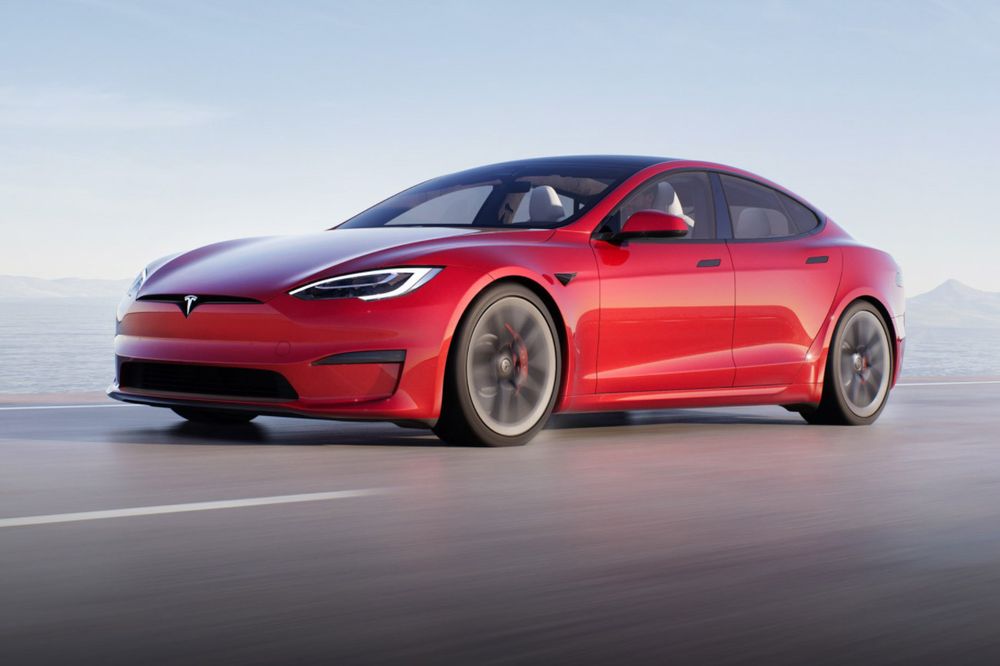
Tesla has added some new upgrades to its Model S sedan and will be released as Model S Plaid.
Cars with Plaid Mode have batteries and three electric motors that can produce up to 1,020 horsepower and can take the car from 0-60 mph in just 1.99 seconds.
That’s a faster acceleration than any other production car in 2021, including ultra-expensive exotic cars from the likes of Lamborghini, Ferrari, and Bugatti.
You may also like to read: Most Expected Best Electric Vehicles of 2021
Porsche Taycan 4S
- Acceleration time (0-60 mph): 2.4 seconds
- Driving Range: 253 mi (407 km)
- Motor Power: 390 kW (523 hp)
- Top Speed: 162 mph (260 kph)
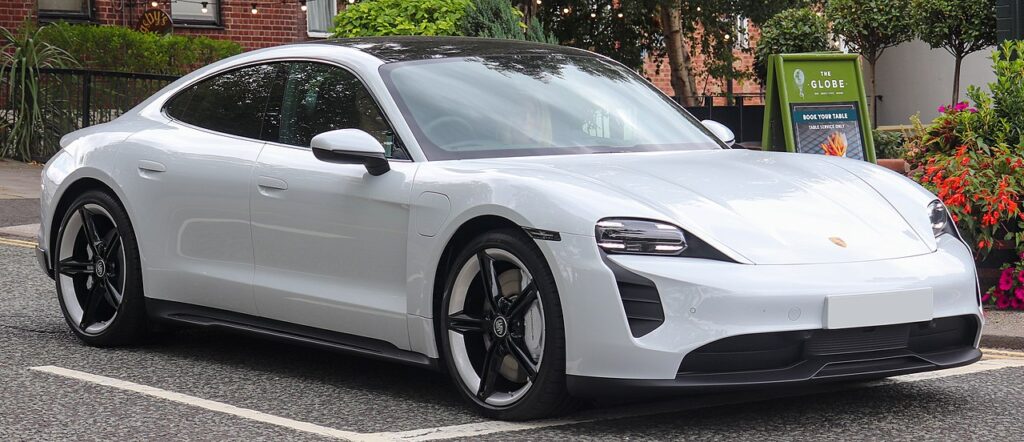
Typically, Porsche launches a new model in the base form before bringing out the big guns.
Not so for the company’s first-ever electric vehicle, the Taycan. Porsche is building that lineup from the top-down, releasing the most powerful Turbo and Turbo S before the more reasonably priced and less powerful Taycan 4S.
But as is the case with Porsche’s gas-powered models, the 4S is hardly a watered-down version of the top Taycans. It can stand on its own.
You may also like to read: Porsche Taycan 4S: Porsche First All-Electric Car
Tesla Model X
- Acceleration time (0-60 mph): 2.7 seconds
- Driving Range: 305 mi (491 km)
- Motor Power: 585 kW (785 hp)
- Top Speed: 163 mph (262 kph)
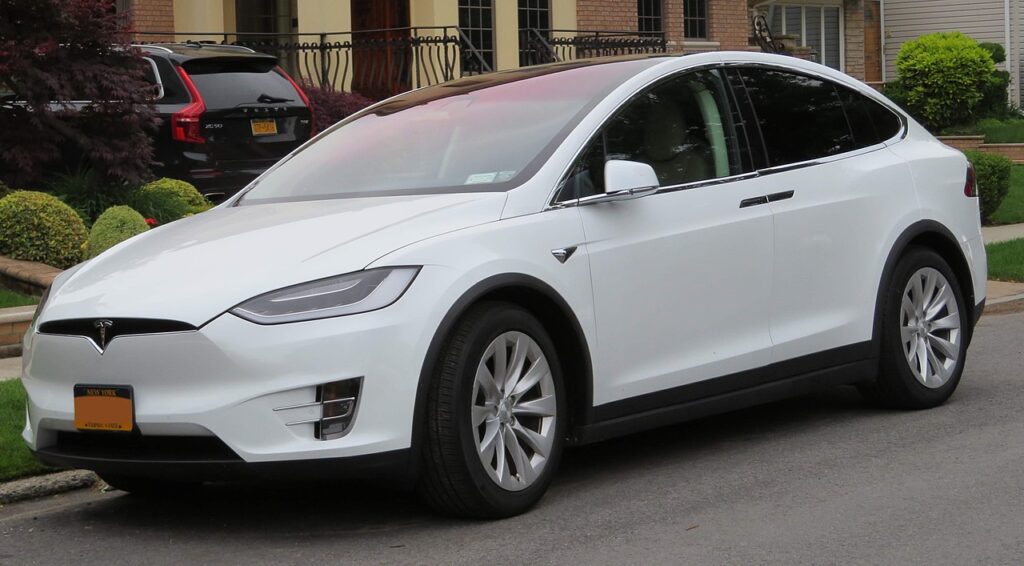
Even a few years after its debut, there’s nothing else on the road quite like the Tesla Model X. It delivers very far electric range.
Tesla Model X comes with features such as its novel folding falcon-wing doors and full access to Tesla’s Supercharger network. Plenty of automakers have announced that they’re coming out with electrified SUVs, but for now, the X is in a class of one.
The Model X is still available in two basic configurations that differ in performance and electric range. Both come with Tesla’s Autopilot driver assistance system and offer a more robust version as an option.
Tesla Model 3
- Acceleration time (0-60 mph): 3.1 seconds
- Driving Range: 310 mi (499 km)
- Motor Power: 336 kW (450 hp)
- Top Speed: 162 mph (260 kph)
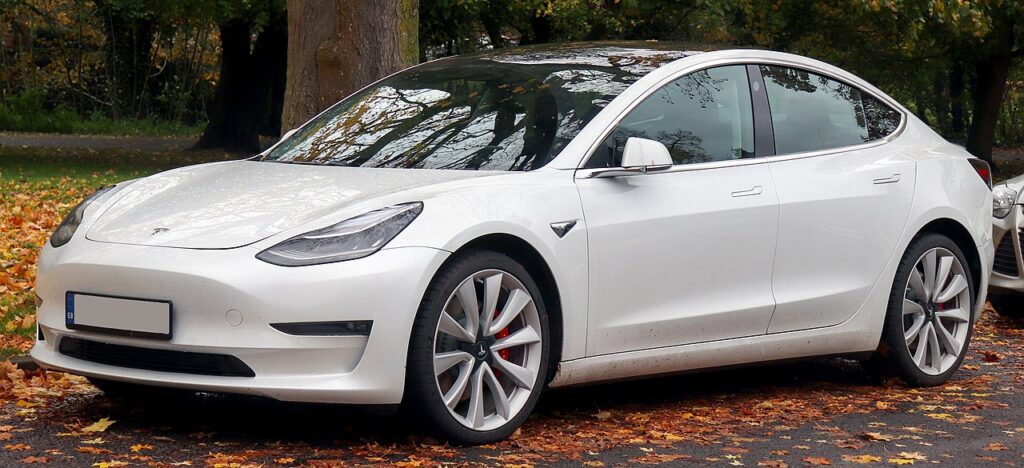
Among the more affordable options in the electric-vehicle marketplace, the 2021 Tesla Model 3 is the one with the most name recognition.
It borrows some styling cues from the company’s Model S sedan and Model X SUV but goes its way with a unique interior design and an all-glass roof.
Acceleration is quick, and the Model 3’s Performance model’s, which receives a sportier suspension and a track driving mode.
You may also like to read: Vogue Tires with Martian Wheels in Tesla Model 3
Jaguar I-Pace
- Acceleration time (0-60 mph): 4.8 seconds
- Driving Range: 234 mi (377 km)
- Motor Power: 294 kW (394 hp)
- Top Speed: 124 mph (200 kph)
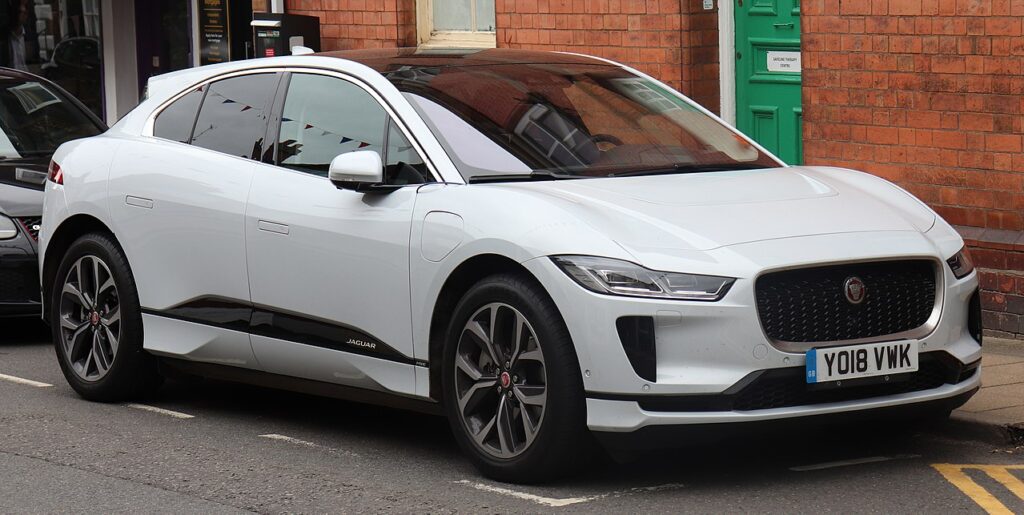
It is the boldest of bold moves from Jaguar: an all-electric SUV, the first credible rival to Tesla’s premium EV dominance, a car that beats its German rivals to market and a radical piece of design.
The I-Pace signals the start of something big, that mainstream manufacturers, not just Silicon Valley start-ups or BMW, are prepared to invest properly in building new-from-the-ground-up electric cars you want to own, and might be able to afford.
The I-Pace uses two concentric electric motors, one on each axle for permanent four-wheel drive, producing 394 hp and 513lb ft of torque, delivered through a single-speed gearbox.
Audi E-Tron
- Acceleration time (0-60 mph): 5.7 seconds
- Driving Range: 248 mi (400 km)
- Motor Power: 265 kW (355 hp)
- Top Speed: 130 mph (210 kph)
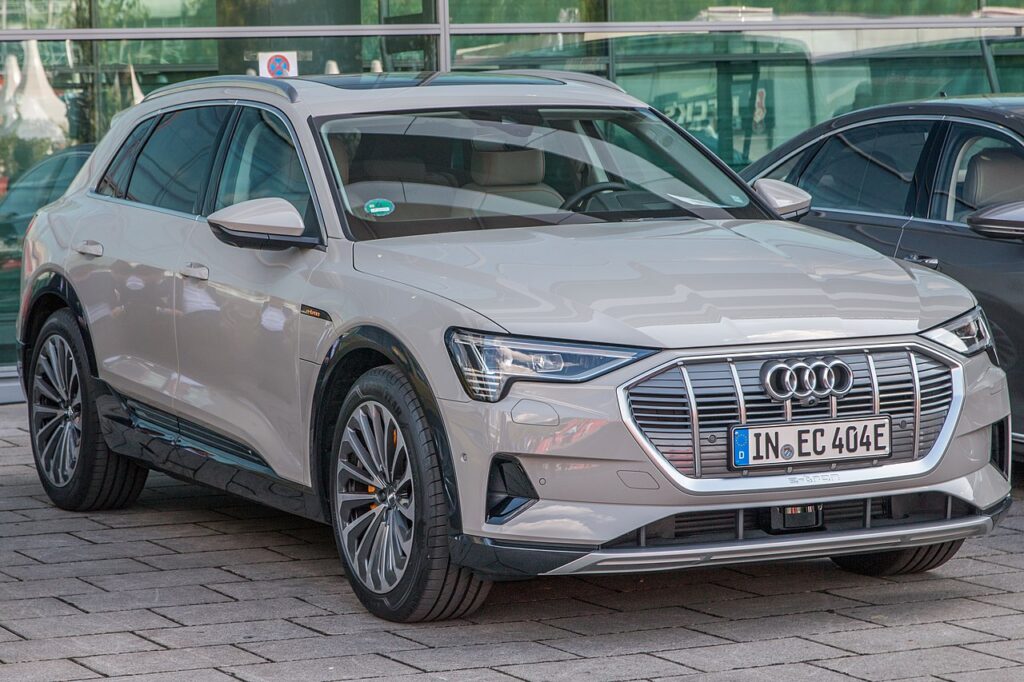
The Audi e-tron is the first full-electrical model from the brand with the four rings. The sporty SUV combines the space and comfort of a typical luxury class automobile with a range suitable for everyday use, catapulting the driver into a new era with the electrical all-wheel drive. Forward-looking, innovative, and electric – the next step into the future.
The new all-electric Audi e-tron Sportback is the epitome of progressive design. The coupé-like roof line accentuates its sporty look, while the dynamic Sportback silhouette promises passion. Athletic design elements on the sills reveal the low installation position of the battery and create an optical highlight. Thanks to exclusive interior features and optional equipment together with intuitive operation of the menu interface, you can take enjoyment of your journey to the next level. Also thanks to the generous feeling of space.
You may also like to read: Audi e-Tron Review | Is it worth your money in 2021?
Chevrolet Bolt
- Acceleration time (0-60 mph): 6.3 seconds
- Driving Range: 238 mi (383 km)
- Motor Power: 149 kW (200 hp)
- Top Speed: 91 mph (146 kph)
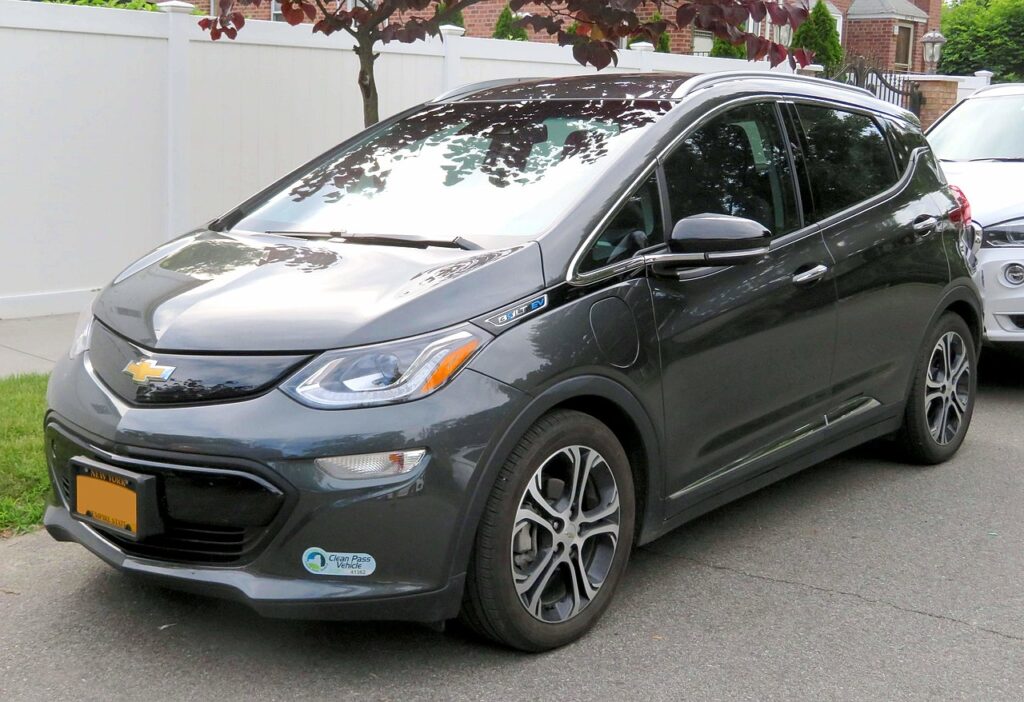
Chevrolet revolutionized the electric vehicle market with the 2017 Bolt. Often considered the first affordable long-range EV for sale, the hatchback came with a range of more than 200 miles and a price tag under $40,000.
Not only was it a great EV, it was a great car, period. Its solid engineering and fun-to-drive nature were key factors that led the Bolt to win our 2017 Car of the Year award.
Today, it remains a competitive player in the EV category, although it now has several compelling rivals. For the 2021 model year, DC fast charging is now standard on the top Premier trim.
You may also like to read: Chevy Bolt San Diego CA | Explore the New Chevrolet Bolt EV 2021
BMW i3
- Acceleration time (0-60 mph): 6.4 seconds
- Driving Range: 153 mi (246 km)
- Motor Power: 135 kW (181 hp)
- Top Speed: 99 mph (159 kph)
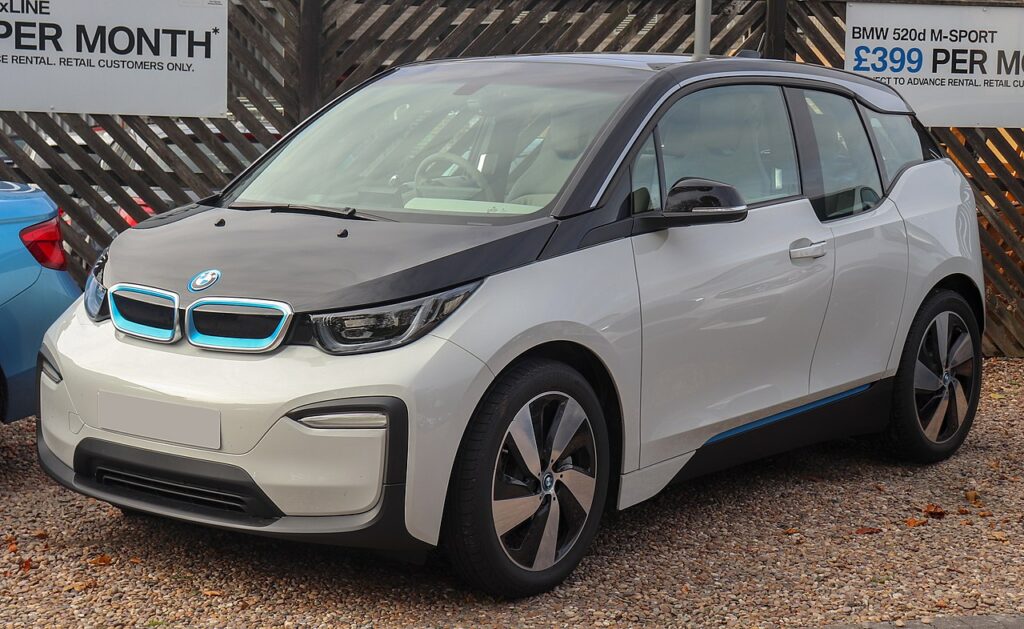
With the original i3 EV, BMW aimed to apply its engineering prowess in unconventional ways—not just with weight-saving construction techniques that mated a carbon-fiber composite passenger cell to a mostly aluminum chassis, but also with eco-friendly elements such as natural-fiber cabin finishes, leather seats tanned with an olive-oil extract, a key fob made of a castor-oil-based polymer, and hemp-reinforced interior plastics. The driving experience wasn’t exactly forgotten, but it played second fiddle to the feel-good sustainability overtures.
Fast forward nearly five years, and the present reality is that the i3’s sales have been well short of original expectations and downright lackluster in contrast to the rabid demand for the new Tesla Model 3 (BMW targeted Tesla with the original i3 launch). Munich’s answer to stoke interest, it seems, is to step back a bit and embrace traditional BMW dynamic virtues.
Nissan Leaf Plus
- Acceleration time (0-60 mph): 6.9 seconds
- Driving Range: 226 mi (364 km)
- Motor Power: 160 kW (215 hp)
- Top Speed: 99 mph (159 kph)
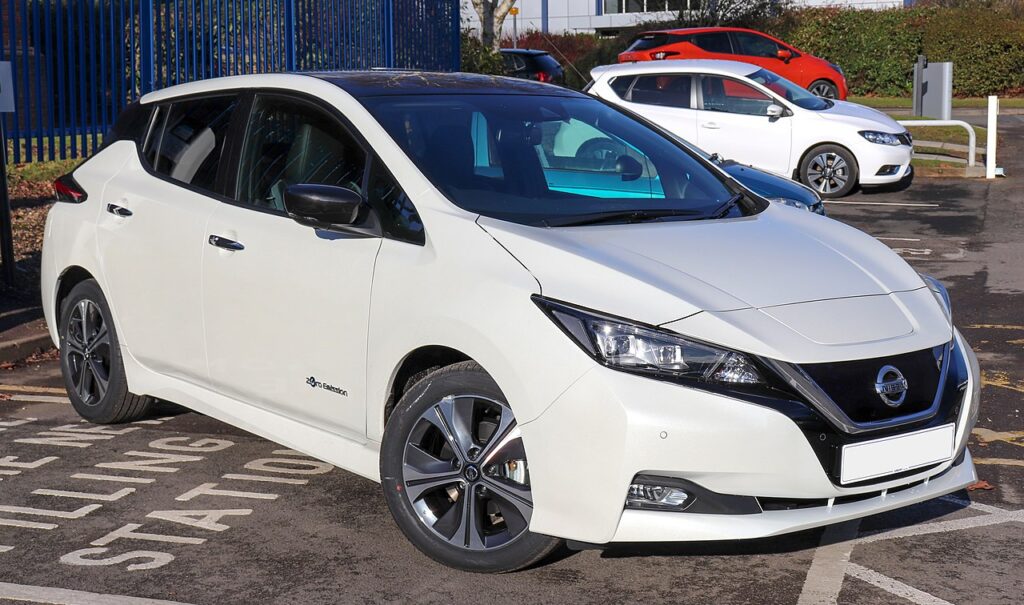
Until Tesla came along, the Nissan Leaf was practically the default for ‘electric car’ in the UK – this Nissan electric car has been around for so long that the firm is already well into its second generation when many other carmakers are still floundering around building their first pure EV models.
A clever reworking of the original rather than a fresh, ground-up design, the Leaf mk2 is still a highly competitive choice at the more affordable end of the electric car market, especially given the introduction of longer-range Leaf e+ variants.
You’d be forgiven for assuming that today’s Leaf, now available with a longer-range 62kWh battery pack in e+ guise, would be at the scalpel’s extremities when it comes to electrically powered mainstream mobility. Spoiler alert: it’s not. Rather than replacing the early versions of the second-generation Leaf, the 239-mile range version sits atop the lineup, with the 168-mile 40kWh battery models offering a cheaper alternative for those who don’t frequently have such long journeys.



